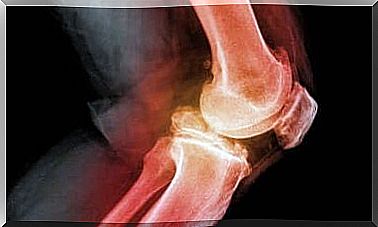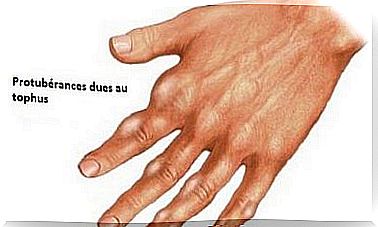Exercises To Treat Sciatic Nerve Pain
Exercise can be useful for sciatic nerve pain or other types of disorders. Which are the most recommended? We detail them here.

It may sound contradictory, but moderate physical exercise is considered an adjunct to improving quality of life if you have sciatic nerve, hip or back pain.
Indeed, a study published in the Cochrane Library suggests that exercise, and physical activity in general, are useful interventions for improving pain intensity and physical function, with few adverse events.
In this sense, by practicing moderate exercise, and on a regular basis, it is possible to decrease the pressure on the sciatic nerve, the inflammation of the hip and the back tension.
How to start? If there is already a condition, it is important to see a physical therapist, as training and postures can vary depending on the type of pain. Ideally, you should first be diagnosed to determine if further treatment is needed.
However, we would like to take this opportunity to detail some of the exercises that can be done for this type of pain. We recommend that you do them with care, keeping good posture, as bad practice can be harmful.
Recommended exercises for sciatic nerve pain
Sciatic nerve pain usually extends from the lower back to the hip. However, there are also cases of hip and back pain that has nothing to do with the sciatic nerve. However, doing certain exercises regularly can help reduce overall pain.
Although they are not a first line treatment for trauma or illness associated with this pain, they can be useful in specific cases. Let’s see in detail which ones are recommended.
The butterfly posture
Known in yoga as Badha Konasana , the butterfly pose is one of the exercises recommended for sciatica pain and any condition affecting the hip and back. Although its effects are researched, it is believed to help relax nerves, decrease muscle tension, and improve flexibility.
It should be noted that in general, yoga exercises seem to be good for sciatica and similar aches and pains. In the Journal of Orthopedic Rheumatology , a study states that yoga has positive effects on reducing back pain and disability.

How to achieve it?
- Sit on the floor on a mat with your legs open and bent.
- At the start of the exercise, try to keep your back straight.
- Try to keep the soles of your feet together.
- Hold your ankles as you do this.
- If you can’t reach that position, that’s okay. You will get there day by day, but it is advisable to do it little by little.
- Later, you can start to lean forward, until you feel a slight pressure on your hip.
- Hold this position for 5 seconds, relax and repeat.
Stretching exercises
Another low impact exercise for sciatic nerve pain is stretching. As experts at Harvard Medical School explain , through Harvard Health Publishing , stretching helps increase joint flexibility and range of motion.
How to do them?
- To start, lie down on your back on a mattress or mat. Then, using your hands, try to bring your knee back to your chest and hold it for 30 seconds.
- As you stand, feel your spine stretch. The posture should not cause pain.
- After the recommended time, stretch your leg and repeat with the opposite leg.
- Then, lying in the same position, bend your knees and cross one leg over the other.
- With your hands, stretch your leg towards your chest and hold this position for 30 seconds. Then repeat with the opposite leg.
- Finally, put a tape on the sole of your foot and try to stretch your leg as far as possible. Hold this position for 30 seconds and repeat with the other leg.
Strengthening exercises
In order to control and prevent pain in the sciatic nerve, hip and back, it is also convenient to devote time to strengthening exercises. A publication from the National Center for Biotechnology Information points out that these exercises, combined with the ones mentioned above, help fight low back pain.
Specifically, they help improve muscle strength, endurance, flexibility, and range of motion, among others. While there are many ways to practice them, here is a quick and easy routine to practice at home.

How to achieve them?
- First, lie down on your back with your legs bent and your abdomen tight. Try to maintain normal, smooth breathing, holding the position for 10 seconds.
- In the same position, place a pillow between your knees and press one leg against the other while contracting your abdomen. Hold for 5-10 seconds and release. Repeat 3 times.
- Then remove the cushion, bring both legs together and lift the hip towards the ceiling (bridging position). Hold this position for 10 to 15 seconds or less. Perform 10 to 15 repetitions, 3 sets.
- Finally, raise one leg in a bent position, so that it forms a 90-degree angle with the floor. Repeat with the other leg, then try to hold both legs in the air for 5 seconds. Go down one by one and do 5 repetitions.
It is important to see your doctor to treat your sciatic nerve
Do not forget to have your ailments treated by a professional. Your doctor and physiotherapist can advise you on other treatments available to help relieve sciatica and other common pain.
Also, you cannot ignore that in some cases these symptoms are a sign of other diseases. Therefore, it is better to receive the necessary tests for a diagnosis in a timely manner.









